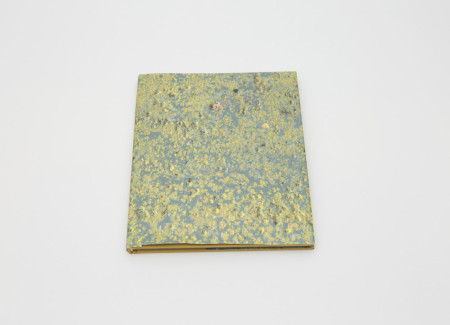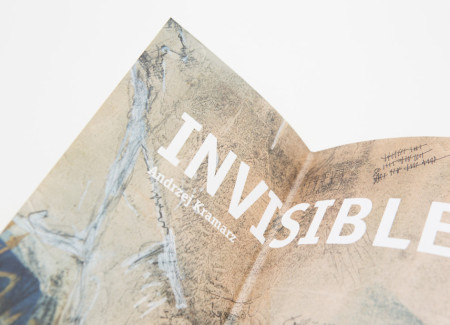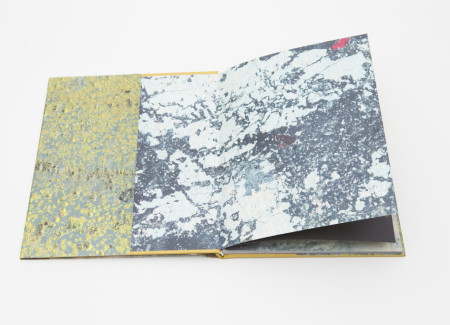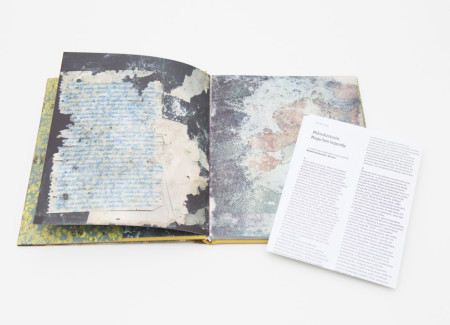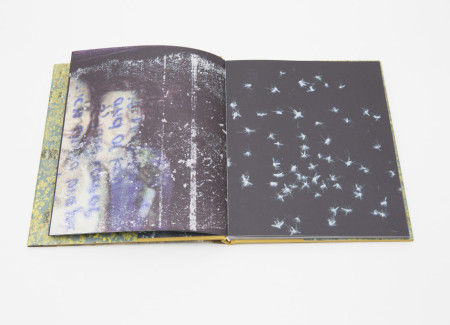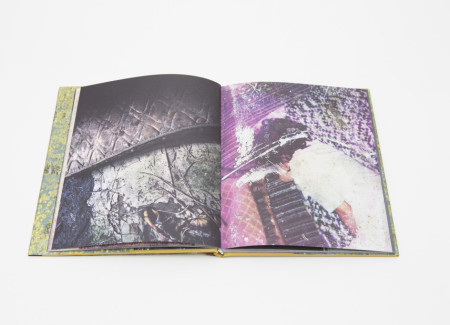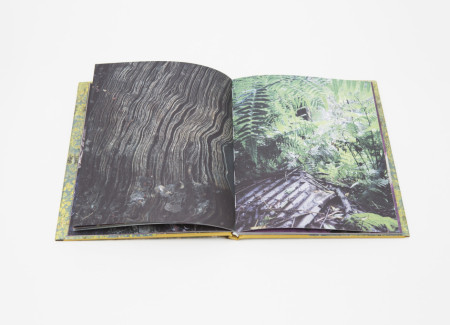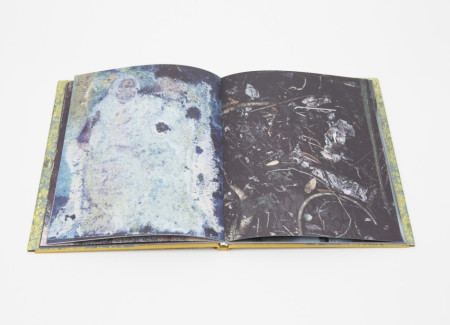JTF (just the facts): Published in 2014 by the Museum in Gliwice (here). Hardcover, 88 pages, with 92 color photographs. First edition of 300 copies. Includes text by Dariusz Czaja (in English and Polish). (Spread shots below.)
Comments/Context: Invisible Maps is an intriguingly mysterious photobook made by the Polish photographer Andrzej Kramarz. Its dust jacket looks like a lichen (or maybe mold), a close-up examination of texture in yellowish and green colors. It has no title, no name of the photographer, not a single hint on where to start or what to expect.
As we open the book, an intense visual flow – scratched walls, a wet book, insects, tights hanging on a string, old letters, fallen leaves, faded negatives, a hanger with underwear – offers complete chaos, a messy mix of colors and fragments. The inside of the dust jacket hides the book’s title and the name of the photographer, while the book itself (now in a simple yellow cover) offers no captions, no commentary, not a single word. There is a folded white sheet of paper inserted in the book (it is likely to fall out when you open the book, adding another level of disorder) and it’s an essay by the anthropologist Dariusz Czaja titled Microhistories: Maps without Legends.
The book is composed of almost hundred pages of full bleed images. Its endpapers depict close-ups of a cracked wall, its texture and colors at the beginning and molded surface at the end. Each spread is a pairing of a damaged photograph (destroyed by time, exposure to water, or by being sandwiched between other images, each with scratches, ink from writings on other images, and/or stains) with shots of various objects, fragments, dirt, lichen, etc. One spread shows decaying handwritten letter diffused by water paired with a faded photograph of two unrecognizable people. Another is an arrangement of a washed out photo of smiling girls and what looks like a negative depicting a bunch of insects arranged in a meticulous pattern. A third combines a shot of a dozen old hangers in the corner of an empty room and a girl in her underwear. The interplay between the physically damaged negatives/images and the abandoned objects and fading nature makes us notice some common forms and motives (passing time, destruction, decay, loss), but the conclusions are elusively open ended.
The book provokes many questions. Were these images taken in artist’s native Poland or maybe in Hawaii where Kramarz lives today? What are their stories? What do they mean? What is the concept behind the pairing of the images? We are left without any clear directions or preliminary explanations. In his essay, Dariusz Czaja makes a connection to Witold Gombrowicz’s novel Cosmos, which explores man’s attempt to bring order out of a chaotic existence. The only detail the photographer reveals about his project is that the images relate to an area measuring some 0.17 hectares. Kramarz puts the viewer in the center of his book, forcing us to look for possible interpretations and put the puzzle together.
Kramarz isolates his peculiar pieces and found fragments from their usual environment and assembles them in a new and unexpected visual narrative. What should we be looking for? What do we see? Do all these elements indeed have connections? A handful of worlds are brought together in one sequenced flow, swirled and left for us to explore. My conclusion is that there is no “right” interpretation of this book – Kramarz is calling attention to the experience/perception of searching for order/meaning, and that uneasy feeling is what is important.
Collector’s POV: Andrzej Kramarz does not appear to have gallery representation at this time. Collectors interested in following up should likely connect directly with the artist via his website (linked above).
